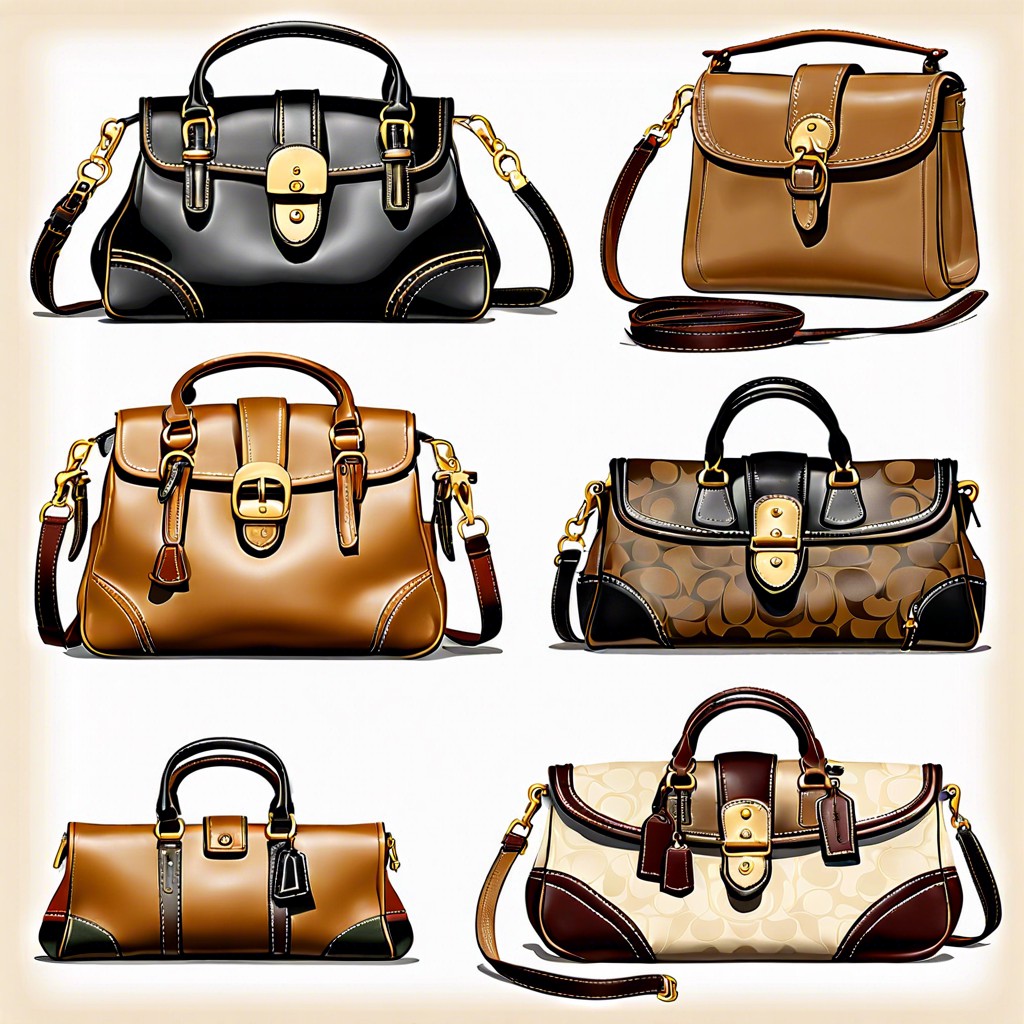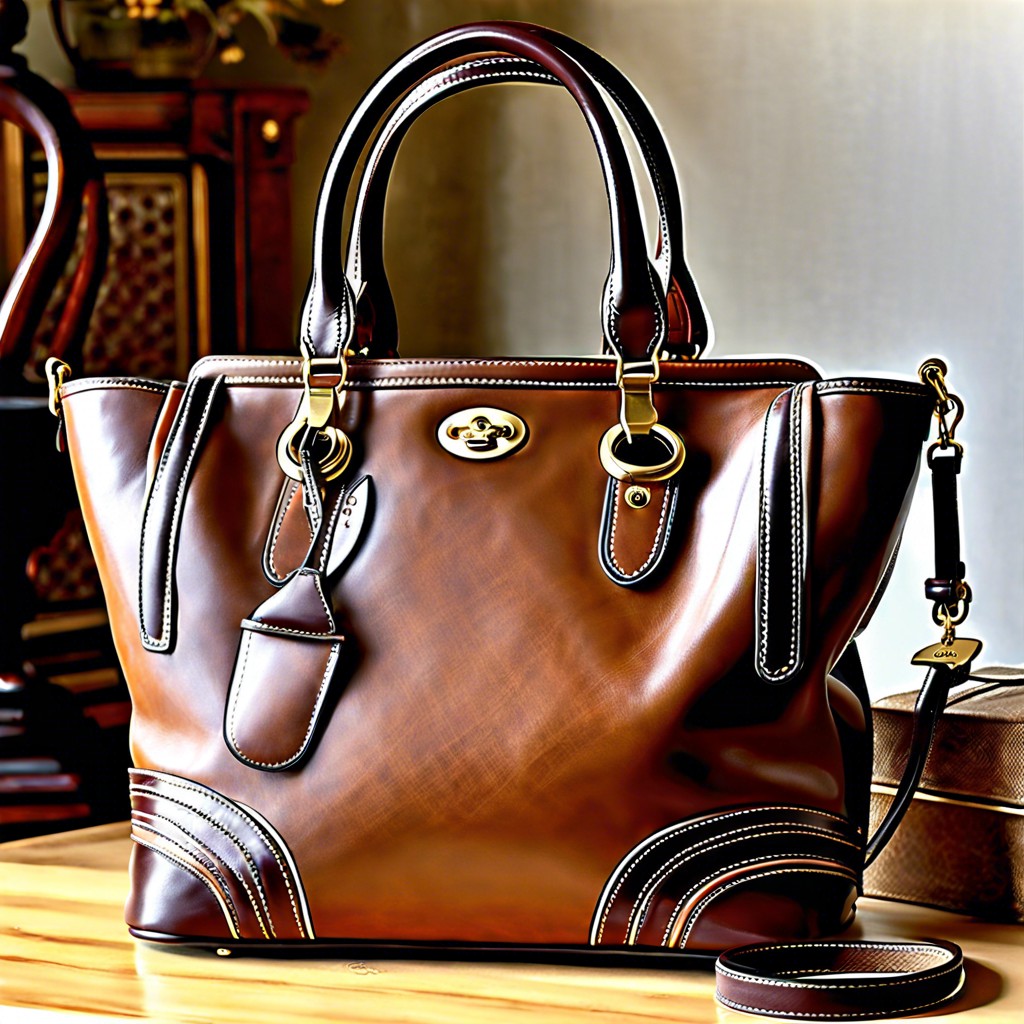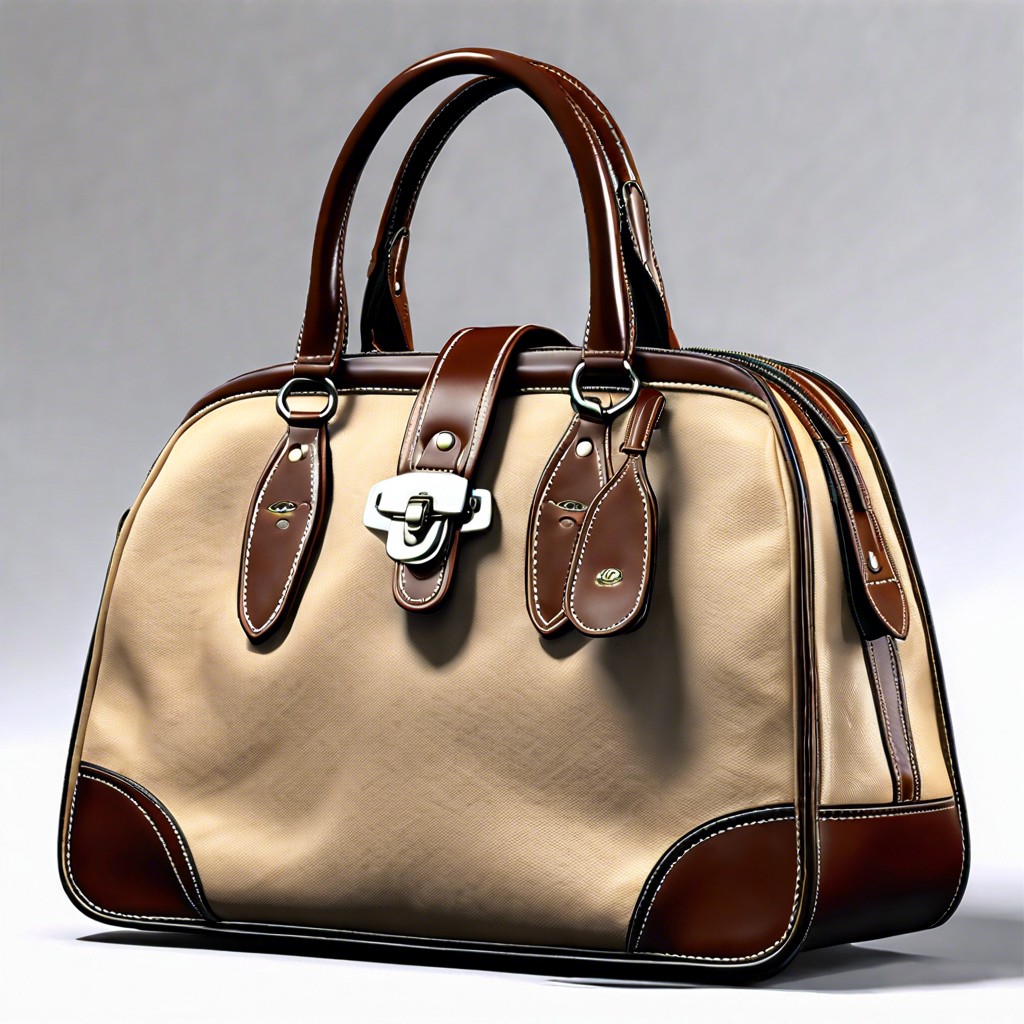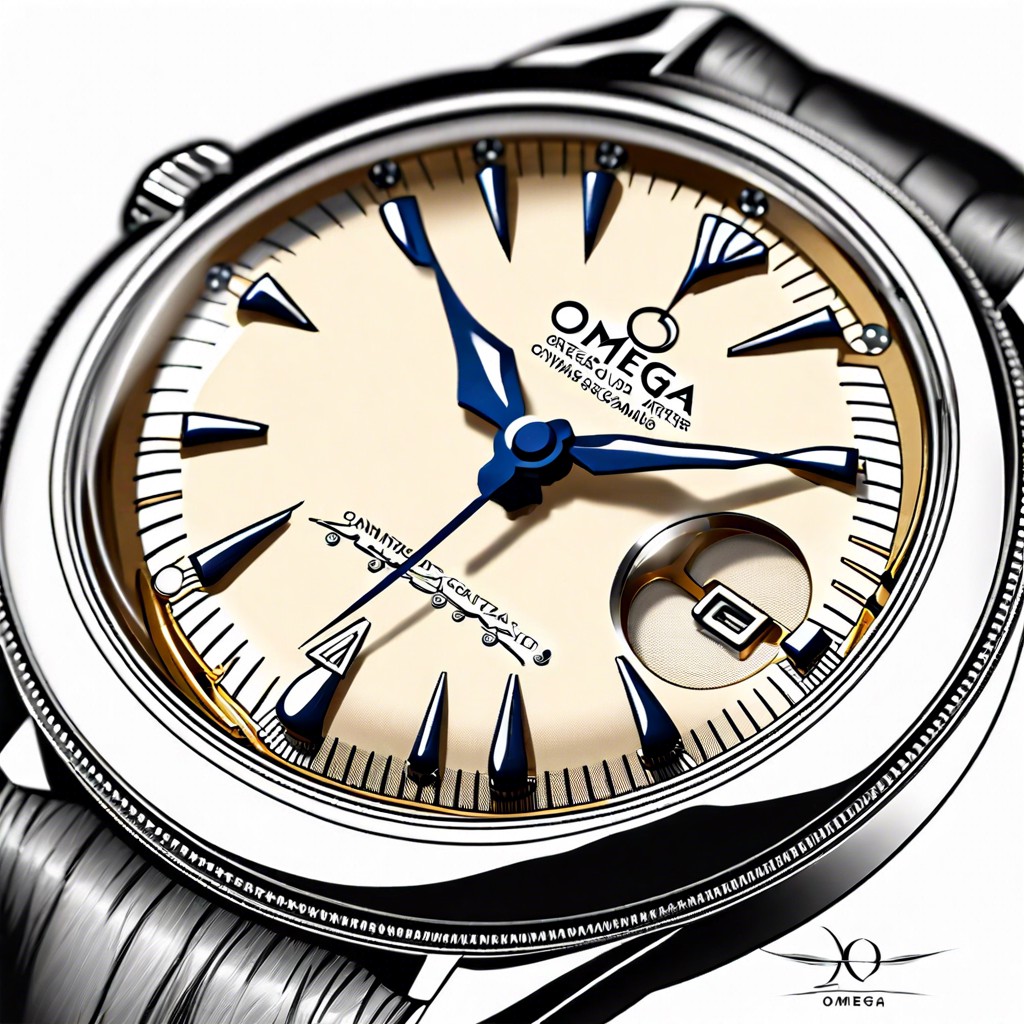Last updated on
Learn how to distinguish and select authentic, quality vintage Coach bags that reflect enduring style and craftsmanship.
Key takeaways:
- Authentic vintage Coach bags have specific identification details.
- Vintage Coach bags have classic design and simplicity.
- High-quality leather and solid brass hardware are characteristic materials.
- Factors that determine the value of vintage Coach bags include condition, rarity, age, style, provenance, and market demand.
- Signs of a replica Coach bag include poor craftsmanship, inferior leather quality, lack of a creed, fake or deteriorating hardware, and incorrect logo.
Identification of Authentic Vintage Coach Bags

Authenticity hinges on specific details. Early Coach bags flaunt a serial number stamped on the inside, often on a square, leather creed patch. This number consists of letters and digits; the format evolves over decades, but generally, the last four to five characters indicate the bag’s style number, and initially, the numbers provided a craftsman’s ID.
Examine the stitching; it should be impeccable, even, and without loose threads. Real vintage Coach purses showcase high-grade thread with consistent color matched to the leather. Zippers are often a telltale sign – genuine bags will typically have YKK or Talon zippers, known for their quality.
Consider the leather’s look and feel. High-quality, full-grain cowhide, which develops a unique patina over time, is a Coach hallmark. The leather should feel supple, thick, and buttery – never plastic-like or rigid. Smell can also be a clue; genuine leather has a distinct, musky scent, not a chemical one.
Lastly, familiarize yourself with the brand’s logo and hardware. Authentic Coach items have solid metal hardware, and the logo is consistently and neatly embossed or engraved, not glued or poorly printed.
Key Features of Vintage Coach Bags

Classic design and simplicity mark the aesthetic of vintage Coach handbags. Most feature a sleek, uncluttered look with solid colors and often a single primary compartment.
Original vintage models lack the ‘C’ logo pattern that became popular in the 2000s. The presence of a creed—a small square leather patch with a registration number and style number—is a signature trait for verification, with earlier versions stamped rather than printed.
Stitching on authentic vintage bags is even, with high-quality thread, and zippers are generally made by YKK or Talon, reliable indicators of the time period. Hardware on these bags, including buckles and clasps, is typically made of solid brass.
Early bags were typically unlined, showcasing the suede’s reverse side of the leather, a seldom-seen feature in recent Coach models.
Serial numbers on older bags often begin with a letter, followed by four digits, while some truly vintage items might not have a serial number at all.
Lastly, the turnlock, a metal fastener that twists to open and close, is a distinctive feature introduced in the 1960s on the iconic ‘Cashin Carry’ line designed by Bonnie Cashin.
Materials Used in Vintage Coach Construction

High-quality leather, often full-grain, characterizes classic Coach bags, setting a standard for durability and a patina that enhances with age. The original hardware, typically made from solid brass, provides a hefty, luxurious feel and a deep, golden hue that develops a unique tarnish over time. Stitching on these bags remains a testament to craftsmanship – tight, even, and hard-wearing. Vintage Coach bags did not typically feature linings in their early designs, allowing the leather’s reverse side to be seen and felt, which should be suede-like and soft. Additionally, many utilized uncoated, natural glove-tanned cowhide, responding to the oils from the user’s hands, evolving into a deeply personal item.
Determining the Value of Vintage Coach Bags

Several factors contribute to a vintage Coach bag’s worth:
- Condition: A bag in mint or excellent condition fetches a higher price. Look for intact stitching, working zippers, and minimal wear.
- Rarity: Limited edition releases or discontinued models often command premium prices due to their scarcity.
- Age: Generally, older models are more valuable, especially if they represent a significant era in the brand’s history.
- Style: Classic styles that remain popular over the years tend to retain or increase in value.
- Provenance: A bag with a verifiable history or previous notable ownership can add to its value.
- Market demand: The current fashion trends and the collector’s market demand can influence the value of a vintage Coach bag.
When assessing a bag’s potential value, cross-reference these points with completed sales on auction sites, price guides, and reputable vintage dealers’ offerings.
Spotting Replicas: Signs a Coach Bag Isn’t Vintage

Pay attention to craftsmanship. Genuine vintage Coach bags exhibit high-quality stitching with no loose threads. Check stitching patterns for consistency.
Examine the leather quality. Authentic vintage pieces generally have a more robust feel and show a natural patina developed over time.
Look for the creed. Authentic bags feature a leather creed patch with a unique serial number, whereas replicas might not have one or use a fake serial number.
Inspect the hardware. Real Coach bags use solid metal that often carries the brand’s logo, which should be clear and precise. Fading or chipping is a sign of a counterfeit.
Assess the lining. Vintage Coach bags usually have a simple, unbranded interior lining. Busy patterns or logos might indicate a fake.
Scrutinize the logo. Early Coach bags did not have the ‘C’ logo pattern that’s common today. If a purported vintage bag has this logo, it’s likely not an authentic vintage piece.




